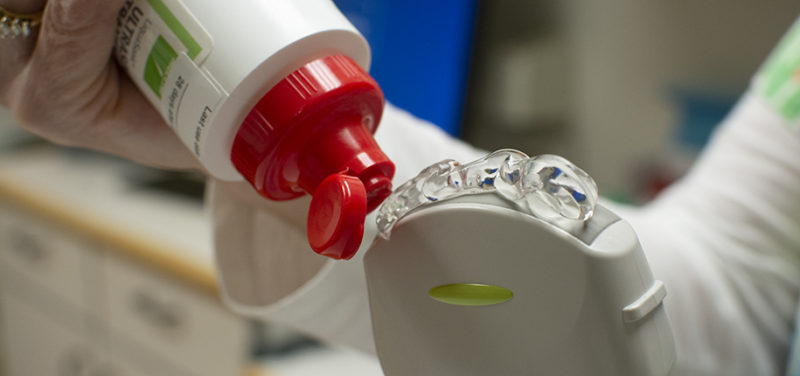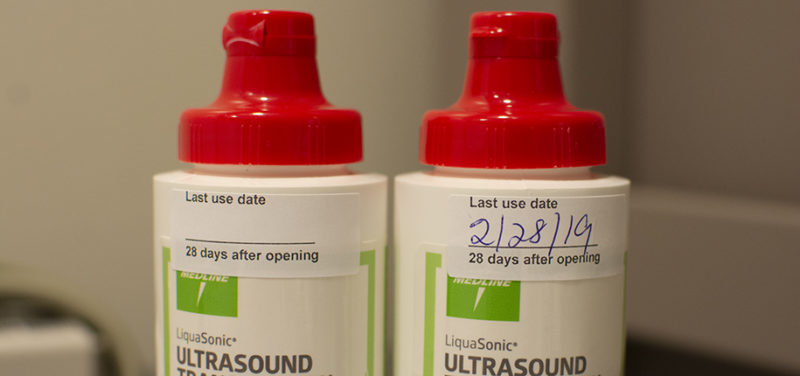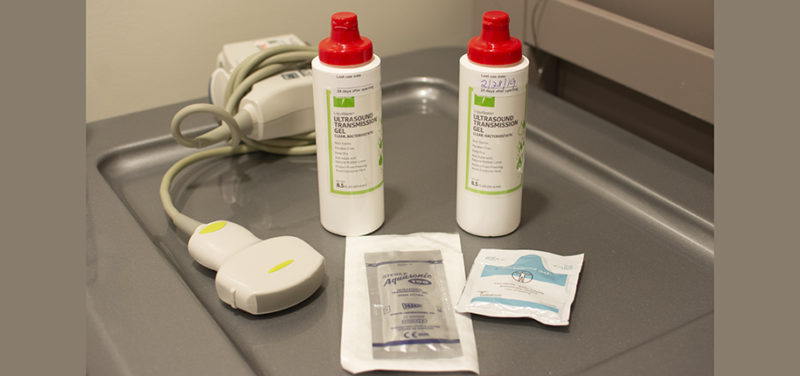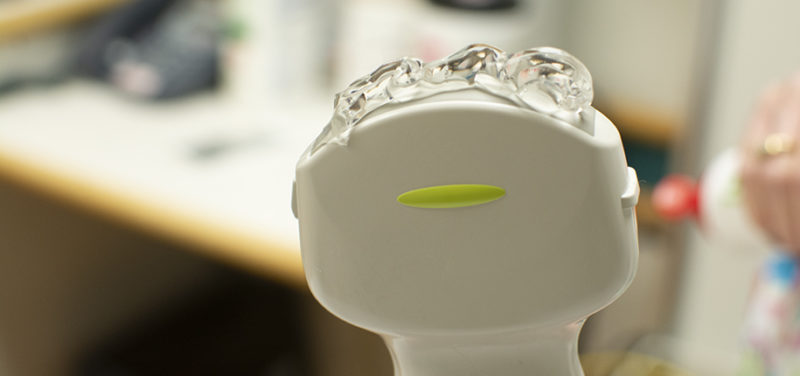

An ultrasound is an easy, painless exam, but it can get a bit messy due to the gel that is rubbed on the skin. A question we hear quite frequently in the Ultrasound Division is, “Why do you have to use gel?” The answer is simpler than you might think.
Sound waves don’t travel through air very well. And while you might think there is no air when the probe is on the skin, the tiny hairs and dry skin hold many little pockets of air. The gel serves as a connector, eliminating the air and forming a bond between the ultrasound probe and the skin. It also reduces or eliminates static. This conductive substance allows the sound waves to travel directly to the tissues beneath the skin, allowing us to obtain clear images of the organ(s) of interest.
Ultrasound gel is a thick substance composed of water and propylene glycol, a synthetic compound often found in food and cosmetic or hygiene products. It has a sticky consistency, allowing it to be spread over the skin without dripping or running off. The shelf life of gel is 5 years; however, for infection-control purposes, it is suggested that it be used within 28 days after the bottle is opened. In the Ultrasound Division, we write the expiration date on every bottle as soon as it is opened.

The bottles of gel are non-sterile and are not to be used on open wounds, mucous membranes, premature infants, or critically ill or immunocompromised patients. Single-use sterile gel packs are available for these instances. The gel packets and bottles are kept in a warmer to ensure patient comfort during the exam.

The more gel we use, the better our images. So although it might be a messy exam, an ultrasound study is an excellent tool for imaging our young patients.
